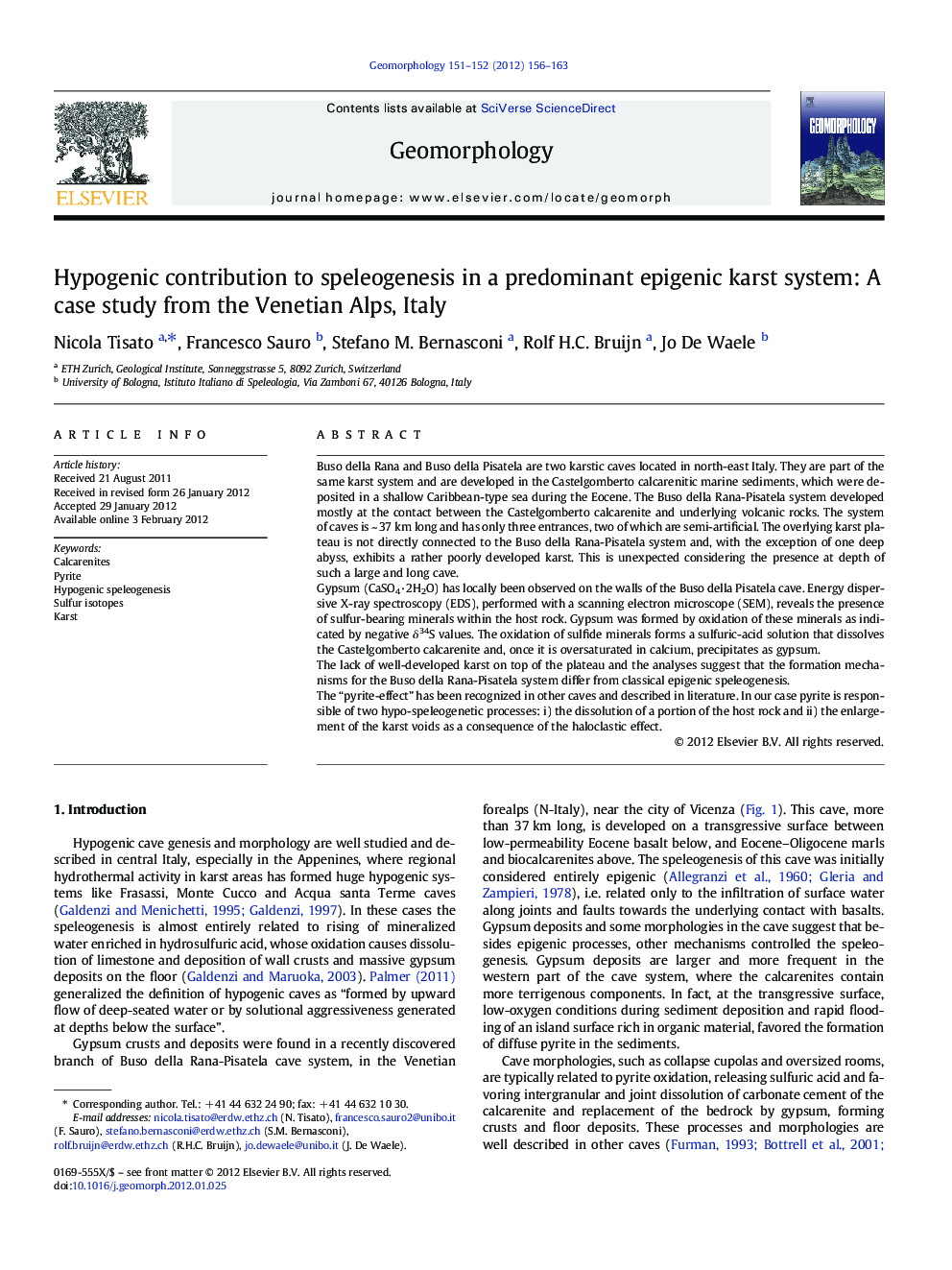| کد مقاله | کد نشریه | سال انتشار | مقاله انگلیسی | نسخه تمام متن |
|---|---|---|---|---|
| 4685196 | 1635483 | 2012 | 8 صفحه PDF | دانلود رایگان |

Buso della Rana and Buso della Pisatela are two karstic caves located in north-east Italy. They are part of the same karst system and are developed in the Castelgomberto calcarenitic marine sediments, which were deposited in a shallow Caribbean-type sea during the Eocene. The Buso della Rana-Pisatela system developed mostly at the contact between the Castelgomberto calcarenite and underlying volcanic rocks. The system of caves is ~ 37 km long and has only three entrances, two of which are semi-artificial. The overlying karst plateau is not directly connected to the Buso della Rana-Pisatela system and, with the exception of one deep abyss, exhibits a rather poorly developed karst. This is unexpected considering the presence at depth of such a large and long cave.Gypsum (CaSO4·2H2O) has locally been observed on the walls of the Buso della Pisatela cave. Energy dispersive X-ray spectroscopy (EDS), performed with a scanning electron microscope (SEM), reveals the presence of sulfur-bearing minerals within the host rock. Gypsum was formed by oxidation of these minerals as indicated by negative δ34S values. The oxidation of sulfide minerals forms a sulfuric-acid solution that dissolves the Castelgomberto calcarenite and, once it is oversaturated in calcium, precipitates as gypsum.The lack of well-developed karst on top of the plateau and the analyses suggest that the formation mechanisms for the Buso della Rana-Pisatela system differ from classical epigenic speleogenesis.The “pyrite-effect” has been recognized in other caves and described in literature. In our case pyrite is responsible of two hypo-speleogenetic processes: i) the dissolution of a portion of the host rock and ii) the enlargement of the karst voids as a consequence of the haloclastic effect.
► Investigation conducted on the cave called Buso della Rana-Pisatela (Italy).
► Field observations reveal gypsum presence throughout the cave.
► Microstructural, mineralogical, and stable isotopes analyses were conducted.
► Oxidation of sulphides within the host rock occurs in the cave.
► Cave genesis and morphology are related to hypo-speleogenetic processes.
Journal: Geomorphology - Volumes 151–152, 15 May 2012, Pages 156–163